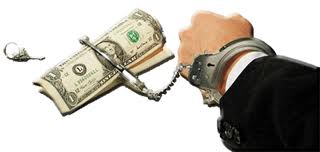Sarah took a car loan 5 years ago. This year she rightfully celebrates paying it off, by enjoying dinner with her close friends. “So how much did it cost you?”asks John, one of her colleagues. “The car cost Kes 1 mn in total.”she replies confidently. “Kes 1 mn in five years?” Not bad!” quips John and they continue enjoying their evening.
So did Sarah really spend Kes 1 mn on buying her car? I beg to differ. Let’s analyse Sarah’s loan further. She borrowed Kes 1 mn from the bank to buy this car for a period of five years. For the actual period of the loan, she spent another Kes 492,000 in interest charges from the bank. Sarah therefore paid Kes 1,492,000 for her car. To put this into perspective further, a car is a depreciating asset. It is estimated that cars lose about 15% of their value every year. By the time she finished paying off her loan, the value of her car was worth Kes 443,000. She therefore spent Kes 1,492,000 to get an asset worth Kes 443,000. And this calculation does not even take into account maintenance costs of the car. This is definitely an “investment” that has delivered negative returns. Had she bought this in cash, it would still deliver the same negative returns but at least would be less the interest charges.
Obviously buying something like a car in cash makes more sense. However I know you could argue that you would never be able to buy this in cash, it would just take too long and you need a car now. The convenience that a car comes with is understandable. However this calculation does matter when we are buying luxury items, when we are talking about our second or third car. When it is a luxury as opposed to a convenience. When status read “what are you driving these days?” matters. So assuming Sarah really needed that particular car, what should she have done? Had she put in Kes 5,000 extra towards her monthly payments, the interest cost would have been slashed to Kes 376,000 and she would have taken 4 years to pay it off as opposed to 5 years. Had she put in an extra Kes 10,000 her interest cost would have been Kes 306,000 and she would have taken just over three years to pay it off. She would have been able to save Kes 186,000 in interest charges. Had she saved just what she was paying in interest on a monthly basis and the investment was earning just 10% p.a. she would have walked away with Kes 580,000. Enough to buy a piece of land today. A real appreciating asset.
The same principle would apply to your mortgage. You can eliminate years off your mortgage as well as significantly reduce interest costs if you put down extra money. Use the rent from the property to pay off the loan. Look at what money you can save from your monthly expenses and work on reducing your outstanding loan amount. An extra 15,000 shilling per month on a Kes 5 million mortgage (20 years) will reduce your overall interest cost from Kes 10.8 million to Kes 5.8 million. Yes, the true cost of your property will actually be Kes 15.8 million and not Kes 5 million if you work with the 20 year schedule given to you. Especially with mortgages be careful with the prepayment penalties in your agreements. Banks typically make most of their interest in the first 10 years of a mortgage so they may penalize you for paying off your loans early. The table below shows how much of the monthly repayment on the above mortgage is being allocated towards principal (the original loan balance) and interest (lenders profit) on various stages of the mortgage.
Years Principal Component Interest Component
Yrs 1 Kes 4,000 Kes 58,000
Yr 6 Kes 8,000 Kes 54,000
Yr 11 Kes 15,000 Kes 47,000
Yrs 16 Kes 31,000 Kes 31,000
Yr 20 Kes 53,000 Kes 8,000
This is therefore why the lender would want to protect their right to earn profit particularly in the early years. It also illustrates why paying even just a portion of your loan balance early or making extra monthly repayments can significantly reduce the amount of interest you will pay over the life of the mortgage. Find out how much of your mortgage can be paid off without incurring penalty fees and in which periods. Read that agreement before signing on to know what you are getting yourself into. Any additional repayments that you make should also be credited towards principle and not the interest. This way it will effectively reduce both the interest cost and time period.
In summary, remember the true cost of debt is actually made up of the original loan amount plus the interest. What you could have done with the money i.e. the opportunity cost should also from part and parcel of the debate you have when in this situation. Are the luxuries really worth it?
Waceke Nduati-Omanga


Very great post. I just stumbled upon your blog and wanted to mention that I’ve truly loved surfing around your weblog posts.
After all I will be subscribing to your rss feed and I am
hoping you write again soon!